Content from the Brookings Institution India Center is now archived. After seven years of an impactful partnership, as of September 11, 2020, Brookings India is now the Centre for Social and Economic Progress, an independent public policy institution based in India.
Sambandh Scholars Speak is a series of blog posts that feature evidence-based research on South Asia with a focus on regional studies and cross-border connectivity. The series engages with authors of recent books, articles, and reports on India and its neighbouring countries.
For decades, India-Bangladesh relations were marred by the question of a comprehensive settlement of the land boundary between both countries, an important aspect of which included facilitating the belated exchange of border enclaves. These were pockets of land embedded entirely in the foreign territory of its neighbour complicating the state’s administrative control over the enclave and its residents, who in turn, were essentially ungoverned and disconnected from their respective home states for almost seventy years. In some cases, the structure was further complicated with the existence of counter-enclaves and counter-counter-enclaves, wherein the enclave of one state was entrapped by the enclave of the other, and so on. The 2015 Land Boundary Agreement served a historic role in advancing the exchange of 111 enclaves (17,160.63 acres) from India to Bangladesh and reciprocatively, the latter transferred 51 enclaves (7,110.02 acres) to India. In addition, the choice of citizenship in either country was offered by states to enclave residents.
In his article[1], Md. Azmeary Ferdoush traces the history of erstwhile Indian border enclaves presently part of Bangladeshi territory. In doing so, Ferdoush captures the lived experiences of its residents long-neglected by the states involved, exploring their various ‘acts of belonging’ to the host state through the concepts of spatial socialization, social memory, and regional identity, which ultimately came to influence their choice of citizenship in Bangladesh over resettlement in their home country.
In this edition of our blog series on issues related to India’s neighbourhood connectivity, Nitika Nayar interviews Azmeary Ferdoush on his article “Acts of Belonging: The choice of citizenship in the former border enclaves of Bangladesh and India” published in Political Geography Vol. 70, 2019.
 Source: Annexure II, India & Bangladesh Land Boundary Agreement, Ministry of External Affairs, Government of India
Source: Annexure II, India & Bangladesh Land Boundary Agreement, Ministry of External Affairs, Government of India
Q. In contrast to most reports that underscore isolation of enclave residents by their home country, Tin-Bigha corridor is a case in point where Bangladesh used infrastructure to connect with its enclave residents in Dahagram-Angarpota, India. How did such initiatives by the home country complicate the choice of citizenship amongst enclave residents? Post-2015, what potential does this corridor serve in connectivity initiatives between both countries?
A. Well, the connection with Dahagram-Angorpota through the Tin-Bigha corridor has been a significant one for both Bangladesh and India since the 1974 Land Boundary Agreement (LBA). The LBA laid the paperwork for the Corridor as both parties agreed that Dahagram-Angorpota would not be exchanged as Bangladesh would give up its claim on the half of Berubari. The LBA also included that India would lease the Corridor to Bangladesh for perpetuity. Both these factors (the Corridor and Dahagram-Angorpota being exempt from the exchange) significantly influenced the idea and rhetoric of citizenship, and the sense of belonging of the Dahagram-Angorpota residents (Cons 2016). Unlike most of their counterparts in other enclaves, their identity and sense of belonging to the home country were not blurred. However, such sense and identity were not born in a vacuum. The Corridor became a center of territorial conflict and stimulus for nationalistic feelings in Bangladesh and India. Both local and national politicians depicted the opening of the Corridor as a puncture in India’s sovereign power, while their counterparts in Bangladesh used the same event to intensify nationalistic feelings by depicting India as a ‘hostile neighbour’ (Ferdoush 2019). Such opposing stands regarding the Corridor and eventually a connection with the ‘mainland’ through the Corridor instead of blurring, I would say, made the choice of citizenship relatively straightforward for the Dahagram-Angorpota residents.
The Corridor has been played as a pawn by politicians both pre- and post-2015. However, post-2015, the Corridor has been overwhelmingly depicted as a symbol of cooperation and friendship as the Modi government’s broader geopolitical vision of ‘Look East’ is at stake. On the other side, the Hasina government uses the Corridor and the exchange as a territorial win over its mighty neighbor. Thus, we could expect the Corridor and the enclave exchange being played in the future connectivity initiatives as well.
Q. Some reports claim high estimates of enclave residents wanting to resettle in India who, for various reasons, were either overlooked by officials administering the survey or threatened by parties in Bangladesh. To what extent, was the ‘choice’ of citizenship in the host country exercised freely by enclave residents?
A. I was not surprised at all seeing the low number of enclave residents opting to move to India and none to Bangladesh. Although the Indian government expected a huge number of enclave residents from Bangladesh to move to India and allocated budget for that, to their surprise, less than a thousand people finally moved from Bangladesh to India. Popular media had predicted that a large number of people from the Indian enclaves inside Bangladesh would accept Indian citizenship simply because of economic opportunities. However, scientific studies had already predicted that there were lower chances for people to move, instead, they would stay where they were (Jones 2010, Cons 2016). I also found similar scenarios during my fieldwork and engage with this issue in detail in a paper (Ferdoush 2019). I had even met a few former enclave residents who first opted to move to India and then changed their decisions. Their choice would make more sense once we historicize the process. First, right after 1947 until late the 1960s, enclave residents took advantage of their unique territorial arrangements and swapped lands with their counterparts to settle in the state of their preference. Second, they had developed deep connections with the ‘host-land’ either by marrying or by other means such as buying lands. Third, by the time enclaves were finally exchanged, most of them were second or third generation (young)-adults. Thus, their sense of belonging was strongly influenced by the host state (due to a lack of connection to the home state). Consequently, I view the low number of people moving to India from Bangladesh not as a result of administrative glitch or intimidation but as an ontological choice.
Q. The conflicting Centre-State relations in India contributed to delays in the enclave exchange and subsequent development of its newly acquired territory. Having visited its Bangladeshi counterparts pre-and post-exchange, what are the factors influencing infrastructure development and naturalisation of the new citizens?
A. The key, I would say, lies in the question itself. To a great extent, the structure of the government influenced the (non)infrastructural development or, in other words, the state-making process in these enclaves. The central government is not the ultimate authority when it comes to local affairs in India. In contrast, Bangladesh is not a union, and all the decisions trickle down from the center to the local. Thus, state-making was quicker and relatively less complicated once these enclaves came under the state jurisdiction in Bangladesh. On top of this, there were numerous steps taken by the government of Bangladesh, both formal and informal, to incorporate its ‘new citizens’. An example of the formal arrangement could be a special and quicker arrangement to register enclave lands by the Ministry of Land. Contrary, informal arrangements range from verbal instructions for prioritising enclave residents from higher authorities to easier access to field-level officials.
Q. Your field study recollects the history of border enclaves and experiences of its residents long-neglected as a subject of inquiry in the Social Sciences, especially in discourses on nationalism, border studies, and migration. According to you, what are the other aspects of the India-Bangladesh border worth studying?
A. I believe the Bengal borderland, as many have demonstrated (Cons 2016, Ghosh 2017, Jones 2012, Samaddar 1999, Shahriar et al. 2017, Shewly 2013, Sur 2018, Van Schendel 2005, Whyte 2002), is a productive yet surprisingly under-studied site. While most of the well-known studies focus on the partition, rhetoric of nationalism and the role of religion, the Bengal borderland is a fecund ground for studying cross-border mobilities, sovereignty, migration, gender, refugee camps, statelessness, belonging, bureaucracy, violence, cooperation, defiance, trafficking, smuggling and many more. I am also optimistic as the new generation of scholars keep digging the ground and bring unheard stories from the Bengal borderland, which slowly but surely, is placing Bangladesh-India border as one of the sites of interest within the broader social-science literature.
[1] Md. Azmeary Ferdoush, Acts of Belonging: The choice of citizenship in the former border enclaves of Bangladesh and India, Political Geography, Volume 70, April 2019, Pages 83-91, https://doi.org/10.1016/j.polgeo.2019.01.015
 Azmeary Ferdoush is a postdoctoral researcher in Geography at the University of Oulu, Finland. He studies, broadly, the way man-made ideas of borders and bounded spaces affect human mobility and vice versa. His research interests include, but are not limited to, borders, enclaves, (non)citizenship, nationalism, state, qualitative methods, South Asia, and the Arctic.
Azmeary Ferdoush is a postdoctoral researcher in Geography at the University of Oulu, Finland. He studies, broadly, the way man-made ideas of borders and bounded spaces affect human mobility and vice versa. His research interests include, but are not limited to, borders, enclaves, (non)citizenship, nationalism, state, qualitative methods, South Asia, and the Arctic.
Azmeary’s current project explores the way regional changes and transformation processes take place in the Arctic with an emphasis on Arctic Finland and its adjacent regions, which is funded by the Eudaimonia Institute at the University of Oulu.
Azmeary was awarded the prestigious East-West Center Graduate Degree Fellowship to pursue his doctoral studies in Geography at the University of Hawaiʻi at Mānoa, USA. In his dissertation research, Azmeary studied the choice of citizenship, experiences of (non)citizenship, and state-making processes in the former Bangladesh-India border enclaves.
Email: [email protected]
Cover Photo Description: A pillar marking the boundary of a Bangladeshi enclave inside and Indian enclave inside Bangladesh. Such enclaves are known as double-enclaves. To the left of the pillar is a Bangladeshi enclave while the right side is a former Indian enclave and the background beyond is mainland Bangladesh. Credit: Azmeary Ferdoush.
The Brookings Institution is committed to quality, independence, and impact.
We are supported by a diverse array of funders. In line with our values and policies, each Brookings publication represents the sole views of its author(s).
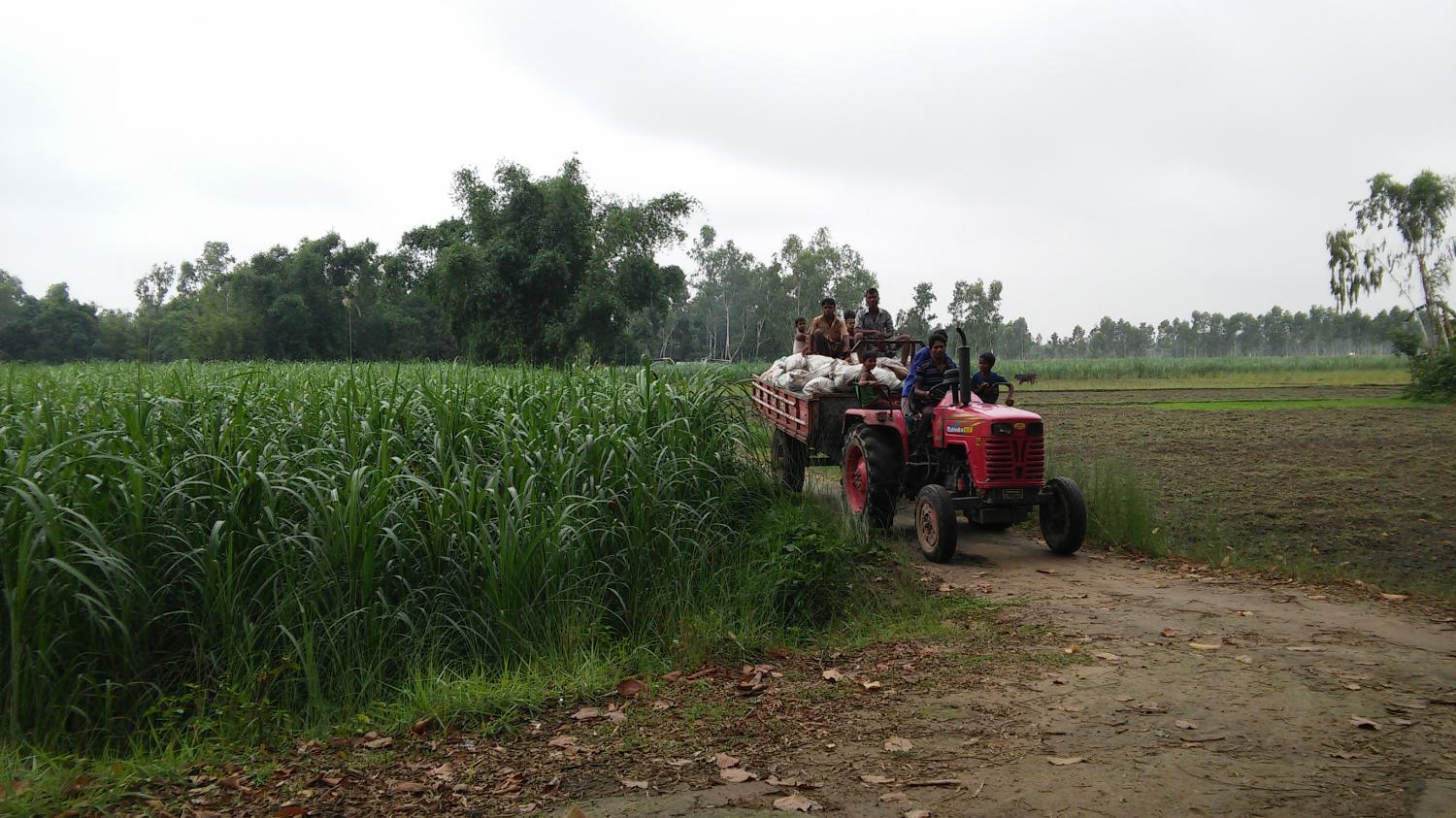
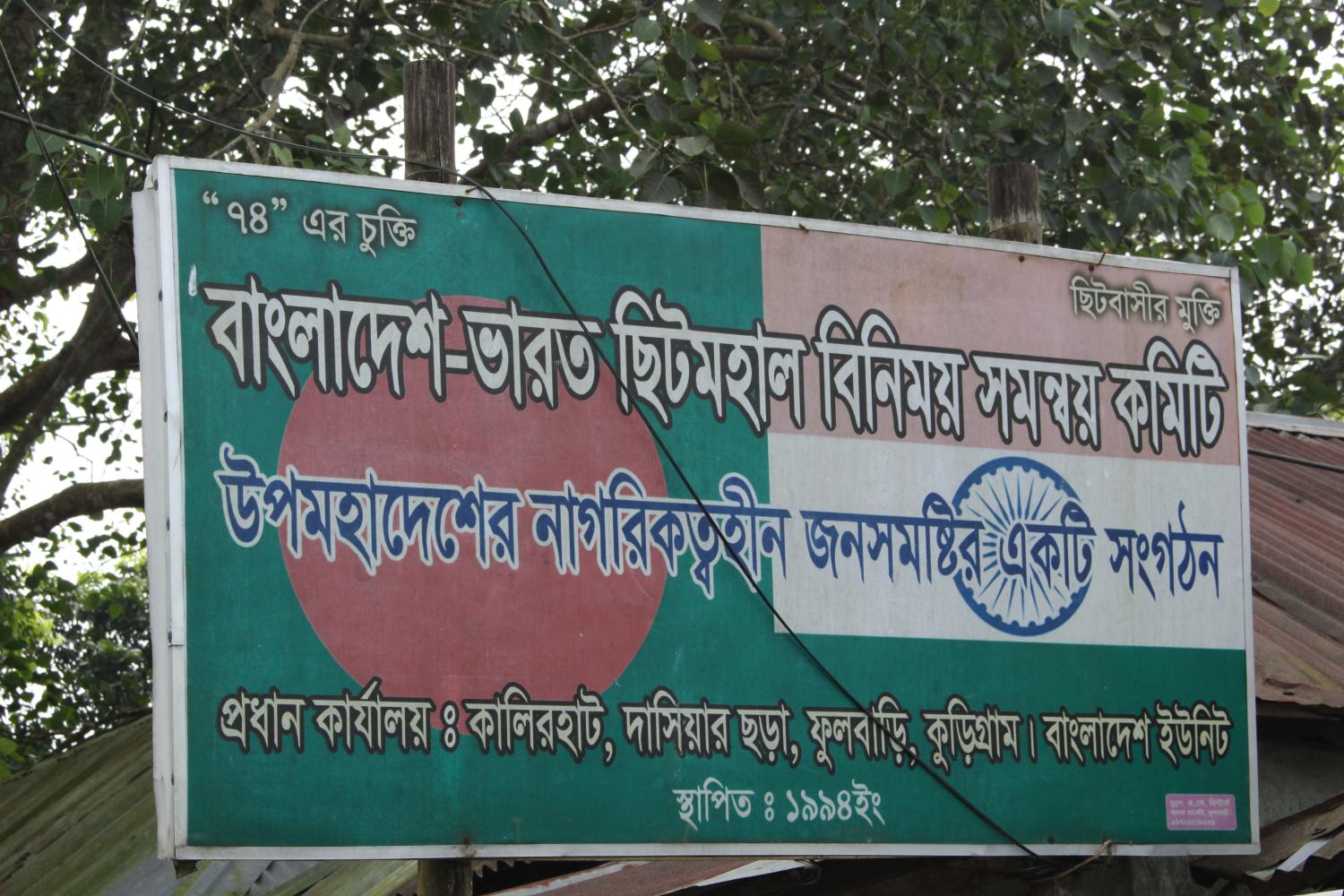
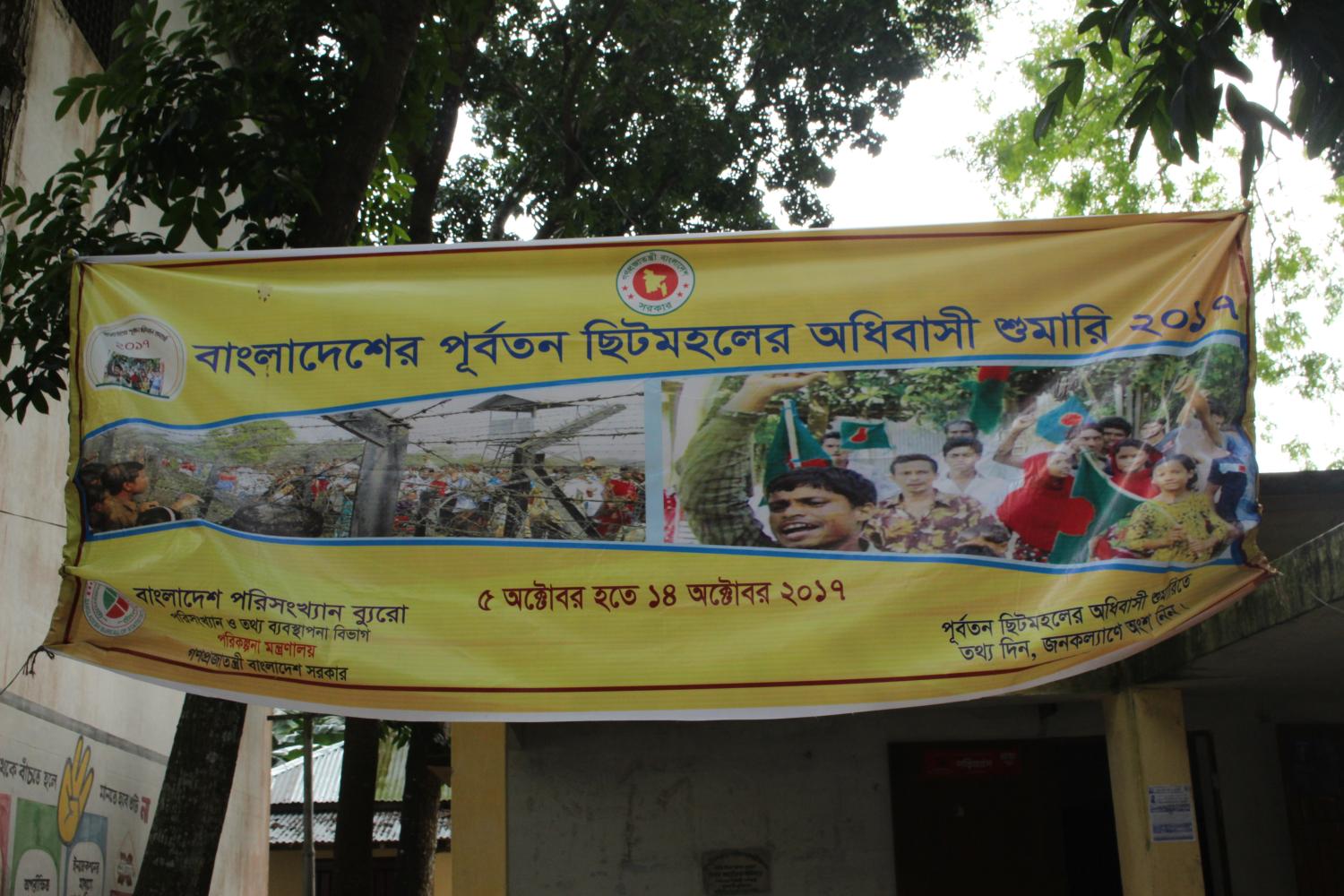
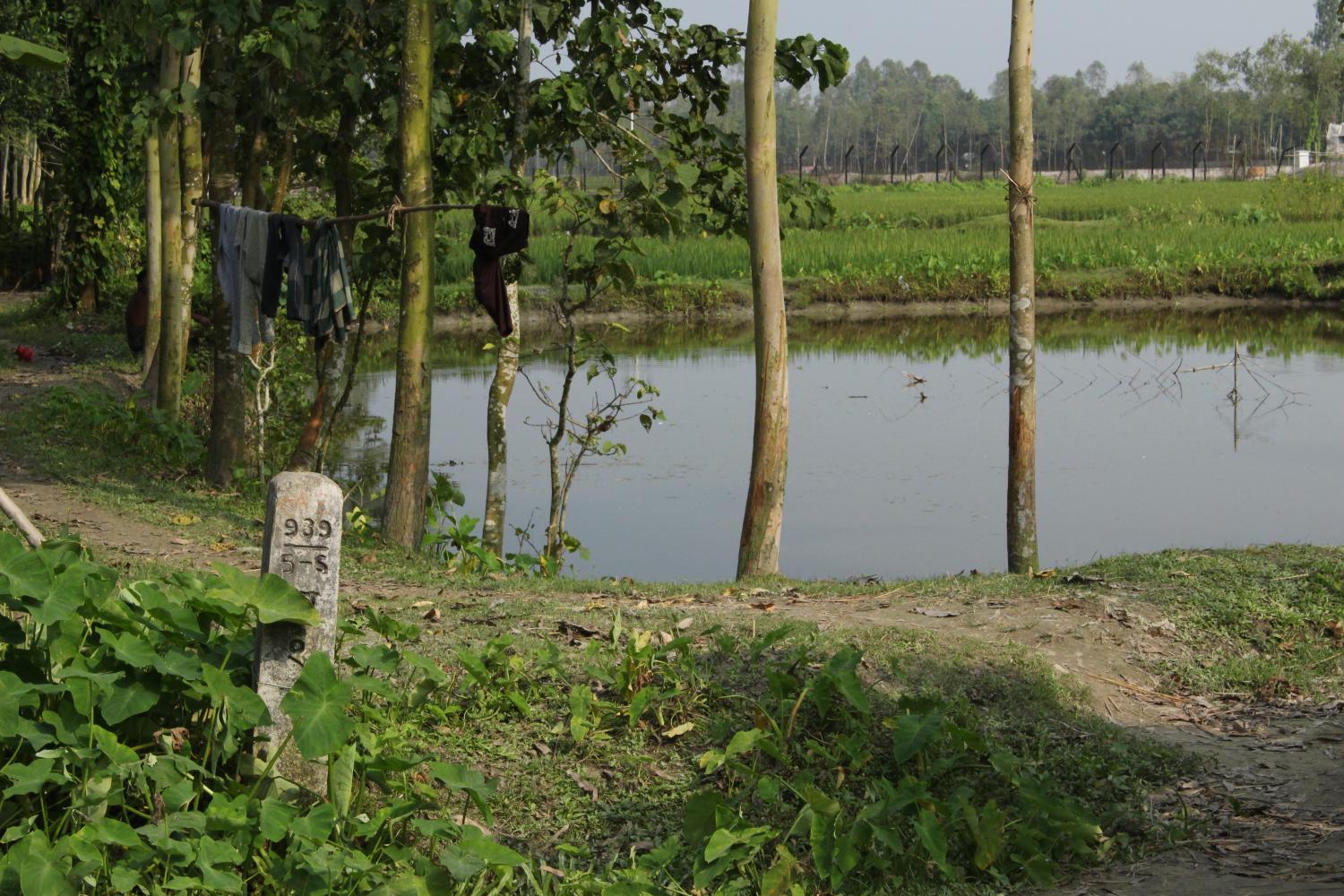
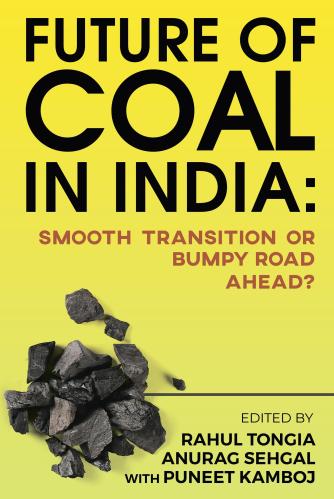

Commentary
India and Bangladesh: Exchanging border enclaves & (re-)connecting with new citizens
May 12, 2020